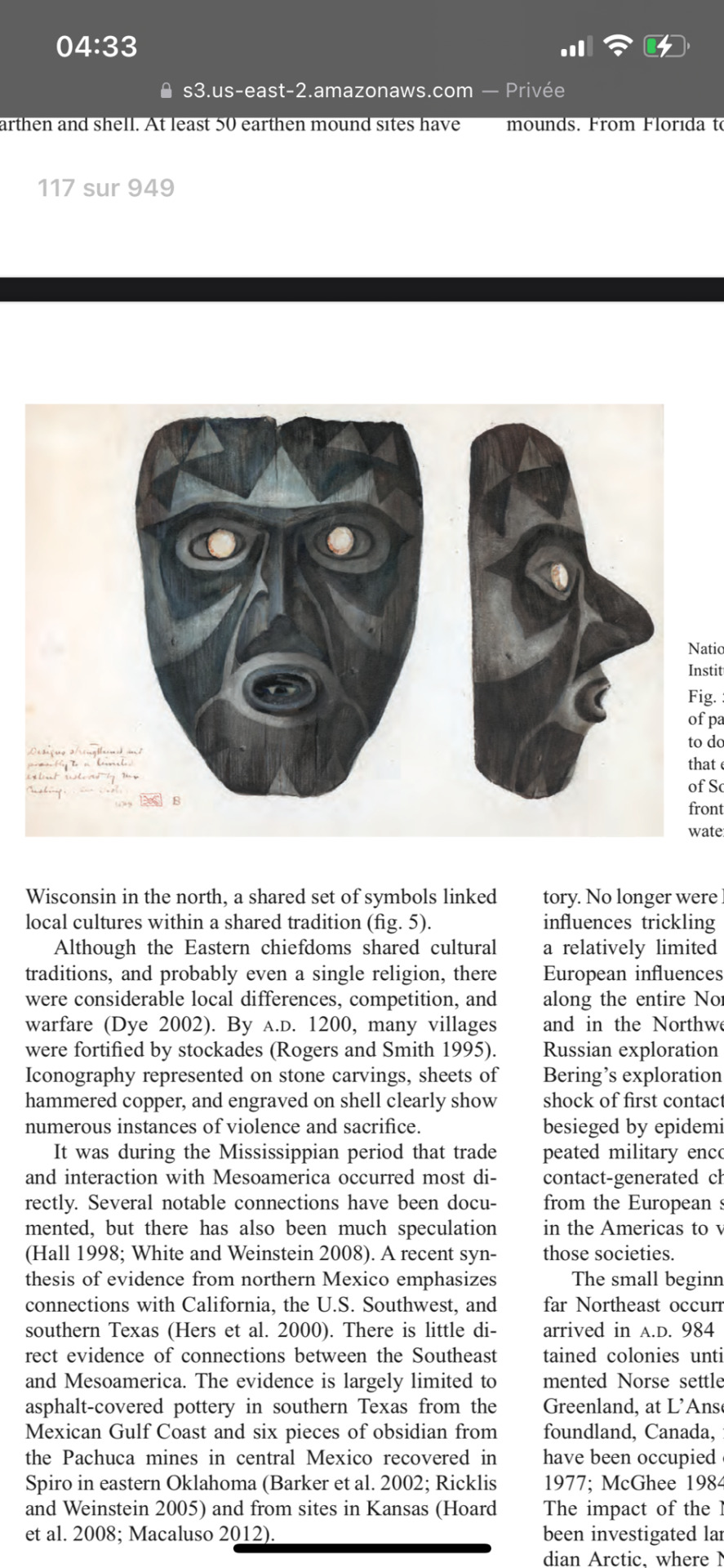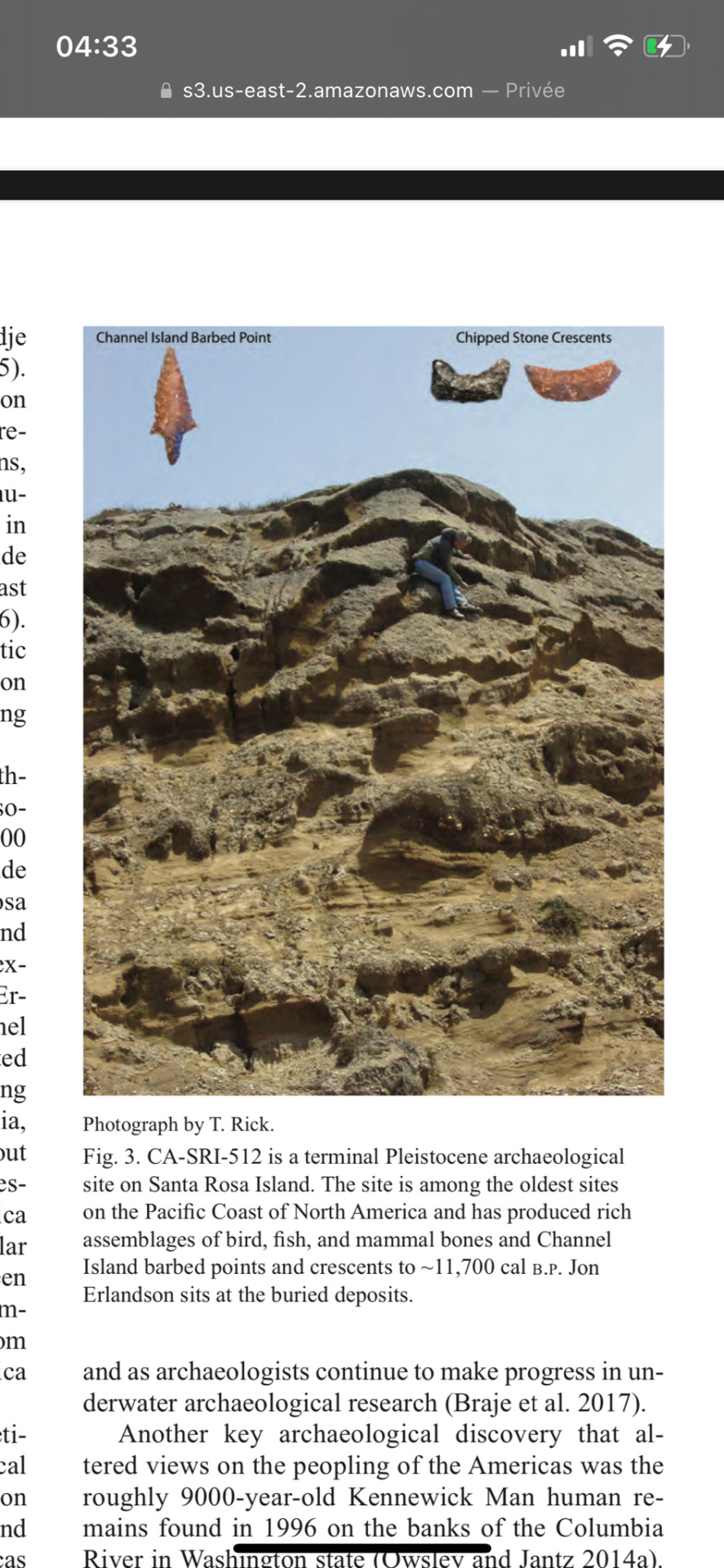#NativeAmericanhistory
Text
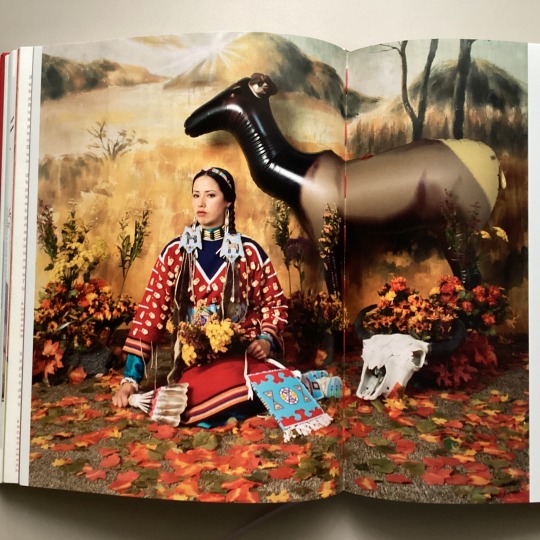
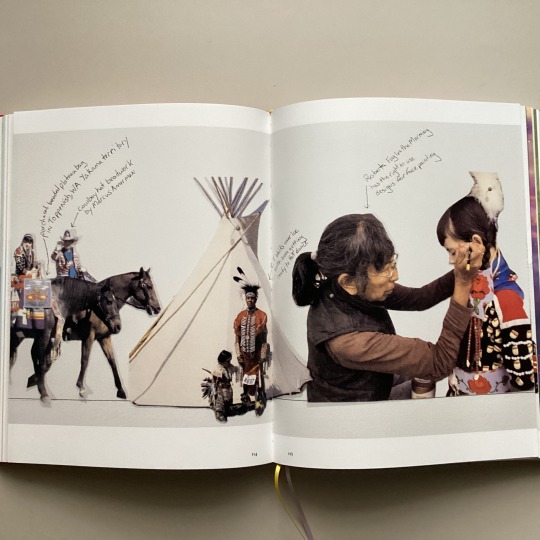

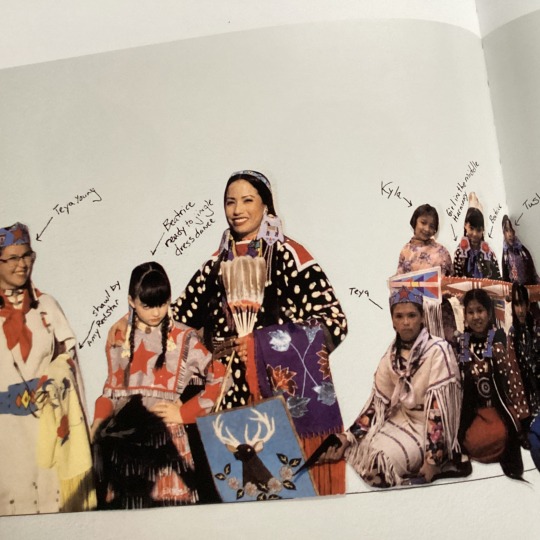

Wendy Red Star is an Apsáalooke artist born in Billings, Montana, and based in Portland, Oregon. Red Star mines archival materials from photographs, maps, legal documents, recordings, artworks, to sacred objects that speak to the multivalence of Apsáalooke experience. Using a wide range of mediums and strategies from photography to installation, Red Star challenges existing histories of Native Americans, particularly related to her Crow heritage and from a distinctly feminist Indigenous perspective. (Summarized from Forward.)
Wendy Red Star : delegation is one of our newest acquisitions. We’re honoring Native American Heritage Month this month!
Image 1: “Fall” from Four Seasons, 2006
Image 2, 3 & 4: Detail from “Um-basax-bilua (W here They Make The Noise)”, 2017
Image 5: Book cover including the image from “Her Dreams Are True (Julia Bad Boy)”, 2021
Wendy Red Star : delegation
Featuring contributions by Jordan Amirkhani, Julia Bryan-Wilson, Josh T. Franco, Annika K. Johnson, Layli Long Soldier, Tiffany Midge.
New York, NY : Aperture ; Dallas, TX : Documentary Arts, 2022.
270 pages : illustrations (chiefly color), portraits ; 27 cm
English
2022
HOLLIS number: 99156378795603941
#NativeAmericanHeritageMonth#WendyRedStar#NativeAmericanartist#womenartist#photographer#Apsáalooke#Crowtribe#Contemporaryartist#photography#self-portrait#NativeAmericanhistory#HarvardFineArtsLibrary#Fineartslibrary#Harvard#HarvardLibrary#harvardfineartslibrary#fineartslibrary#harvard#harvard library#harvardfineartslib#harvardlibrary
83 notes
·
View notes
Text
Play Snow Snake @ IAIS January 20
The snow snake game was once one of the most popular winter games played in North America. Many Native American Communities played it from Maine to California, Oklahoma to Alaska. Today, this game is being revitalized across the country. On Saturday, January 20 at 1 p.m. at the Institute for American Indian Studies on 38 Curtis Road in Washington Connecticut, competitors can make their very own…
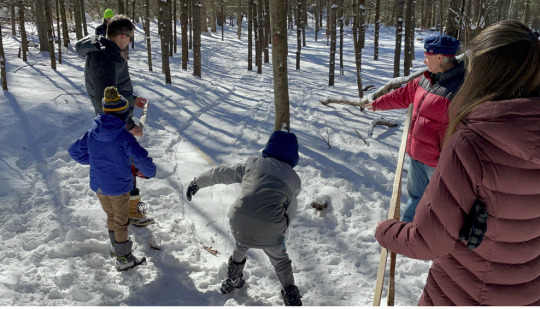
View On WordPress
#InstituteforAmericanIndianStudies#NativeAmerican thingstodo#nativeamericanevent#Nativeamericanhistory#wintergames#winterhike#close to New York#Connecticut#Connecticut Travel#CT event#Ct News#CT Travel#Litchfield Hills#New England#New England Travel#things to do in CT#Washington CT
2 notes
·
View notes
Text
Unknown and Carved in Stone: The Murky Mystery of the Moon-Eyed People
History and folklore live in the same neighborhood. They are spoken, documented, passed down, and sometimes they cross paths and give each other a knowing nod, the weight of which only they fully understand. Fort Mountain State Park in Chatsworth, Georgia is one of those places where history and folklore meet. The story is a strange one and it covers a lot of miles, stretching from Alabama all the way up to Delaware. But in Murphy, North Carolina the words are allegedly given a shape. Enclosed in a case inside the Cherokee County Historical Museum they rest, standing upright, with their eyes gazing out and inviting visitors to stare back just as intently. They look unlike any other ancient form of art found in the Southeast and their story is just as unusual as their appearance. They are an alleged stone representation of the ancient Appalachian Moon-Eyed People.
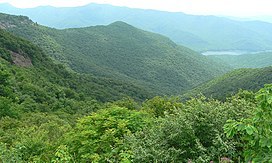
The Appalachian Mountains of North Carolina. Image via Wikipedia Commons.
The Cherokee people have a vibrant culture that is filled with deeply cherished myths, legends, and histories of their people and their ancestral home in the mountains of Southern Appalachia. According to the Cherokee, the Smokey Mountains were formed by a giant buzzard after the giant flood. The exhausted bird fell to the earth and the mountains erupted up from where the massive wings impacted the ground. In the years since the creation of the mountains the Cherokee interacted with many spirits, many creatures, and according to their oral tradition, a civilizations of people that was there before them with extremely pale white skin, fine hair, and eyes that were so sensitive to the sun that they spent the daylight hours living underground.
The first written account of these people comes from European botanist Benjamin Smith Burton (sometimes written as Barton) who wrote in 1797 that he learned about these people from the firsthand account of Colonel Leonard Marbury, an intermediary between the American government and the Cherokee tribe. Burton writes:
“…the Cheerake tell us, that when they first arrived in the country which they inhabit, they found it possessed by certain 'moon-eyed-people,'who could not see in the day-time.”
The Cherokee people had a strong belief in things most people today would consider supernatural, but in their stories of the Moon-Eyed People they were never referred to as something otherworldly. They were considered and spoken about as another culture of human beings, ones that were living in Appalachia before the Cherokee arrived. John Haywood was one of America’s earliest historians and he collected the stories that were passed down through generations of the Cherokee people. Among the stories he documented, some were similar to accounts reported by Burton, that the Cherokee arrived at the mountains and along the Tennessee River they encountered “white people” and fortifications that contained “hoes, axes, guns, and other metallic utensils.” Then there were the fortifications themselves, made of precisely arranged stone, and stretching all the way from the Tennessee River down to the Chickamauga Creek. Were these fortifications created for protection from nature or people?
The Cherokee stories do not mention finding any other civilizations of people along their travels and when these two groups met, they clashed. The text from Burton states “These wretches they expelled” and in his 1823 book Natural And Aboriginal History of Tennessee Haywood writes of “white people, who were extirpated in part, and in part were driven from Kentucky, and probably also from West Tennessee.” Writer James Mooney was familiar with the works of Burton and Hayward as well as the Cherokee oral traditions having collected stories from two Cherokee elders who told that when they first came to the region they encountered people who were “very small and perfectly white” that were then driven from the area and fled west. The story continues that the conflict took both groups of people to Big Chickamauga where an agreement was made that these “very small and perfectly white” people were not permitted back to their land and fortifications, but they were permitted to flee in peace.

The fortifications of Fort Mountain as they appear in modern day. Image via Wikimedia Commons user Thomsonmg2000.
Descriptions of the “Moon-Eyed People” continue to appear in multiple accounts collected from the Cherokee with slight variations. Some describe them as being extremely small, others say they could only see during certain phases of the moon and that they lived underground, another version describes them as tall with light-colored hair and speaking a strange language. While many historians question if these people even existed, those who believe they did have another question to answer. Who were these people? Where did they come from? A popular theory says that that answer can be found by tracing a line that stretches from Georgia across the Atlantic Ocean to Wales.
When the governor of Tennessee John Sevier visited Fort Mountain, Georgia in 1782 he met with the Cherokee’s Chief Ocotosota. At the time of their meeting Chief Ocotosota was ninety years old and when discussing the large stone fortifications standing at Fort Mountain he told the governor that his forefathers "told of the fort being built by white men from across the great water." The accounts from Chief Ocotosota were enough to convince Sevier. There was another story that claimed to tell the origin of those in the Appalachia before the Cherokee and based on the accounts of Chief Ocotosota he believed the tale to be the truth. According to this version of events the mysterious Moon-Eyed People were the descendants of a Welsh prince.
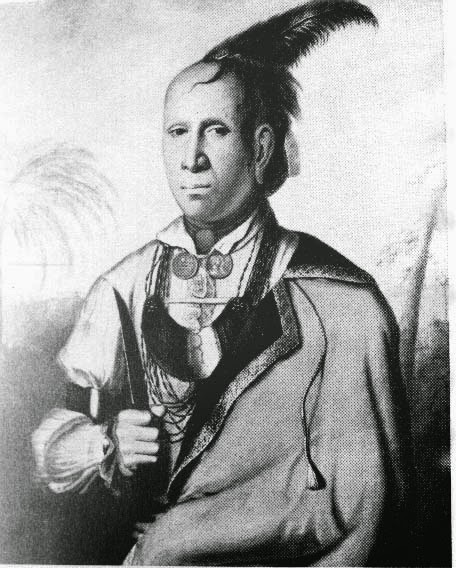
Oconostota, Cherokee chief from a painting entitled "The Great Warrior, Chief Oconostota-Cunne Shote" by Francis Parsons, 1762.
Image and caption credit: Tennessee State Library and Archives
The story of Prince Madoc ab Owain Gwynedd is intriguing, but also murky. The story tells of the prince and his brother Riryd fleeing violence in his homeland and landing in North America in approximately 1170, over 300 years before the voyage of Columbus. Allegedly, they landed in what is now Mobile Bay, Alabama and made their way up the Alabama River and into the mainland where they decided to make their new home. Riryd stayed behind while Madoc returned to Wales where he amassed a fleet of ten ships filled with Welsh people who sailed away from their home and were never heard from again. When speaking about the fortifications with Chief Ocotosota, Governor Sevier was told these stone fortresses were built by those Welsh immigrants and they were all that remained of them after the Cherokee took control of the land.
There was a reason that Governor Sevier was familiar with the story of Prince Madoc and the theory of the Welsh in Appalachia, and that is because Chief Ocotosota was not the only person to speak about these early and mysterious fair-skinned inhabitants. In 1608 a crew member sailing under Captain Christopher Newport wrote a letter describing their interactions with a group of people who spoke a language that was so like his native Welsh that he served as an interpreter between the crew and tribe. Also noted was how different the customs and appearances were of these people compared to other Native Americans. Years later in 1699 the Reverend Morgan Jones reported that while he was traveling through the Carolinas he encountered and spent several months with a tribe called the Doeg who spoke and understood a variation of Welsh. Tennessee governor John Sevier took the “proof” far beyond spoken language and claimed that in 1799 a discovery was made far inland of six skeletons buried in brass armor containing the Welsh coat of arms. This claim was referenced years later by author and historian Thomas Hinde who wrote in an 1824 letter that six skeletons had “been dug up near Jeffersonville, Indiana, on the Ohio River with breastplates that contained Welsh coats-of-arms.” In another part of the country, closer to present-day North Dakota than the mountains of Appalachia, it was reported that instead of canoes the Mandan people used an ancient type of boat that originated in Wales called coracles.
The claim of a prince fleeing Wales, arriving in Alabama, and ushering in generations of Native Americans with Welsh backgrounds persisted but there was also evidence to disprove this theory. Welsh explorer John Evans spent the winter of 1796-97 living with the Mandan people who allegedly spoke Welsh and followed customs passed down through the generations after the Welsh arrived in Alabama. But, in July of 1797 he wrote to Dr. Samuel Jones “Thus having explored and charted the Missurie for 1,800 miles and by my Communications with the Indians this side of the Pacific Ocean from 35 to 49 degrees of Latitude, I am able to inform you that there is no such People as the Welsh Indians.” The argument for or against the existence of Native Americans with Welsh roots had far reaching repercussions. During territorial struggles this idea of Welsh inhabitants in the new world was proposed as a reason that England should have claim to it instead of Spain.
The problem that England had with this claim is the same problem faced today in that proving Prince Madoc arrived in Alabama all those years ago and began a Welsh settlement is a very difficult task. There is a large amount of spoken word and secondhand accounts, but the whereabouts of the skeletons encased in Welsh armor is unknown and the coracles of the Mandan people have disappeared. Tragically, the waves of disease that swept through the land with the arrival of the Europeans took a countless number of accounts with them. In 1837 alone the Mandan people were almost completely wiped out by smallpox brought in by traders.
If the theory of Welsh travelers arriving in North America and living in the Appalachian mountains before the Cherokee is false, than who were these “very small and perfectly white” people with fair hair that could not see in sunlight that were spoken of by so many different people? Another theory is that these people were not new to the land, that they were actually Native Americans with albinism. Albinism appeared among the Hopi people of the Southwest and can be seen in photographs from the 1800s showing children with light skin and hair.

Image of a Hopi child with albinism.
Image originally via The Huntington Library Museum and Botanical Gardens. Hopi Indians, Arizona. Albino in center. Hopi girls, Oraibi, Arizona. There are many Albinos among the Hopi Indians,
photCL 312 (172), The Frederick Monsen Ethnographic Indian Photographs, The Huntington Library, San Marino, California.
Although the Hopi lived in an entirely different region than the people spoken about by the Cherokee, some believe that the mysterious Moon-Eyed People may have been another community of people that also lived with albinism at that time. In 1699 Welsh explorer Lionel Wafer wrote about his experience with a tribe of people living in Panama:
“There is one Complexion so singular, among a sort of People in this Country, I never saw nor heard of any like them in any part of the World. [...] They are White, and there are of them of both Sexes; They differ from the other Indians chiefly in respect of Colour, tho' not in that only. Their Skins are not of such a White as those of fair People among Europeans, [...] but 'tis rather a Milk-white, lighter than the Colour of any Europeans, and much like that of a white Horse. For there is this further remarkable in them, that their Bodies are beset all over, more or less, with a fine short Milk-white Down, which adds to the whiteness of their Skins. The Men would probably have white Bristles for Beards, did they not prevent them by their Custom of plucking the young Beard up by the Roots continually. Their Eye-brows are Milk-white also, and so is the Hair of their Heads, and very fine withal, about the length of six or eight inches, and inclining to a Curl. And what is yet more strange, their Eye-lids bend and open in an oblong Figure, pointing downward at the Corners, and forming an Arch or Figure of a Crescent with the Points downwards. From hence, and from seeing so clear as they do in a Moon-shiny night, we us'd to call them Moon-ey'd. For they see not very well in the Sun, poring in the clearest Day; their Eyes being but weak, and running with Water if the Sun shine towards them; so that in the Day-time they care not to go abroad, unless it be a cloudy dark Day. But notwithstanding their being thus sluggish and dull and restive in the Day-time, yet when Moon-shiny nights come, they are all Life and Activity, running abroad, and into the Woods, skipping about like Wild-Bucks; and running as fast as Moon-light, even in the Gloom and Shade of the Woods, as the other Indians by Day, being as nimble as they, tho' not so strong and lusty. The Copper-colour'd Indians seem not to respect these so much as those of their own Complexion, looking on them as somewhat monstrous.”
Although there may never be solid proof of Prince Madoc’s involvement in the early days of North America there are locations that firmly believe this version of events. At Fort Mountain there are multiple markers that tell the story of the Moon-Eyed People and the arrival of the prince. This is the very place where Chief Ocotosota and Governor John Sevier discussed “the fort being built by white men from across the great water” and it is one of few places that can claim to have a physical remnant of this tale. The forts and wall spoken of by Chief Ocotosota are still standing here, stretching for 855 feet and varying between two and six feet tall at different points. Archaeological estimates state that the wall was constructed between 500 –1500 BCE and those who steadfastly believe the Prince Madoc theory quickly point out that the construction of one of the fortifications located in Alabama resembles those built in Wales during the same timeframe.

Marker in Fort Mountain State Park that tells the legend of the Moon-Eyed People. Image via Wikimedia Commons.
Although Fort Mountain claims to have the fortifications left behind by the Moon-Eyed People, the Cherokee County Historical Museum claims to have a representation of the Moon-Eyed People themselves. Standing together inside a glass case are two figures, standing three feet tall and carved from soapstone, with no hair and eyes gazing. In 1838 North Carolina Senator Archibald Murphy began selling off parcels of land in the place that would become the town of Murphy, North Carolina. A man named Felix Ashley bought a piece of land and while digging in 1841 he discovered the incredibly strange statue that now sits inside the museum. The road from dirt to display was not a fast one though, Ashley took the statue home and leaned it up against one of his buildings until it eventually made its way to the museum where it sat in storage up until 2015 when it finally saw the light of day.
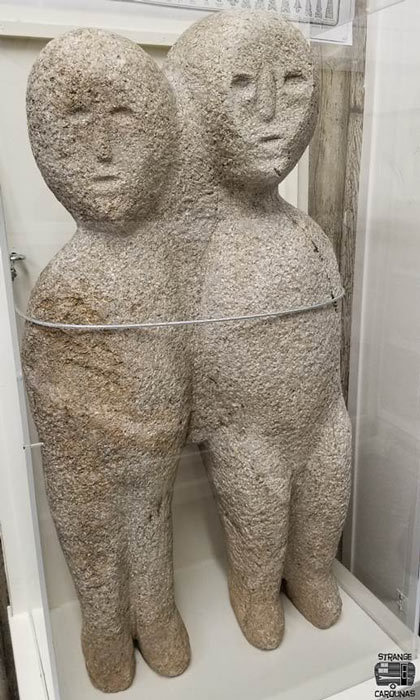
The figures of the alleged Moon-Eyed People. Image via Strange Carolinas.
Like so many aspects of the story, the statue of the two figures are said to represent the Moon-Eyed People, but there is no absolute proof of this. And, like the Moon-Eyed People themselves, there are multiple stories circulating about the origin of the statue with theories ranging from it being a simple sculpture of two people to some believing the Moon-Eyed People were extraterrestrials and this statue was carved as a tribute to them. Museum Director Wanda Stalcup acknowledges the theory of the Moon-Eyed People and the statue’s alleged connection, stating “They were a legend of the Cherokee…The Moon-Eyed People were supposed to be people who only came out at night. They were light-skinned and had big blue eyes." However, Stalcup keeps the door open to all ideas, saying simply that everyone is entitled to their opinion because no one knows what they are.
The Moon-Eyed People have been appearing in spoken word accounts and theories for hundreds of years and despite centuries of speculation as to who they are and where they came from they remain a mystery, unable to be proven or disproven. Perhaps they were Native Americans living with albinism. Perhaps they were descendants of a Welsh prince whose legitimacy has disappeared along with the many years since his arrival. Many people and locations stand strongly by their opinion, but over all the years there is one thing we can say for certain about the Moon-Eyed People.
No one knows who or what they are.
**********************************************************************************
Sources:
David Tibbs. Legends of Fort Mountain The Moon-Eyed People / Prince Madoc of Wales. The Historical Marker Database, 2008. https://www.hmdb.org/m.asp?m=11590
The Moon-Eyed People. North Carolina Ghosts. https://northcarolinaghosts.com/mountains/moon-eyed-people/
Exploring the Mysterious North American Moon-Eyed People. Ancient Origins Reconstructing the Story of Humanity’s Past. 2022. https://www.ancient-origins.net/myths-legends-americas/moon-eyed-people-0016334
Vicky Verma. Moon-Eyed People From Ancient America With Pale Skin Were Afraid Of Daylight, Why? Journal News Online. 2022. https://journalnews.com.ph/moon-eyed-people-from-ancient-america-with-pale-skin-were-afraid-of-daylight-why/
Beth Lawrence. Appalachia’s Lost Colony The mystery of the Moon Eyed settlers. The Sylva Herald and Ruralite. 2020. http://www.thesylvaherald.com/news/article_63be7a46-193a-11eb-bcb1-9b6452791b80.html
Ben Johnson. The discovery of America… by a Welsh Prince? Historic UK. https://www.historic-uk.com/HistoryUK/HistoryofWales/The-discovery-of-America-by-Welsh-Prince/
The Moon-Eyed People. Roadside America. https://www.roadsideamerica.com/story/51476
#husheduphistory#featuredarticles#history#Appalachia#AppalachianHistory#Cherokee#CherokeeHistory#NativeAmericanHistory#GeorgiaHistory#Alabama#AlabamaHistory#Unknown#UnsolvedMysteries#MoonEyedPeople#WelshHistory#weirdhistory#forgottenhistory#strangehistory#oddhistory#historyclass#truth is stranger than fiction#historymystery#historicmystery#myths#legends
6 notes
·
View notes
Photo

#Repost @we_are_proud_native • • • • • • Follow us >> @we_are_proud_native Follow us >> @we_are_proud_native . . All credits are reserved for their respective owners 💼 Credit 👉 📷: unknown (DM please) . . . #nativeamericanheritagemonth #Native #nativeamericanpride #nativeamericanbeauty #nativeamericanhistory #nativecultures #nativeamericanproud #nativefashion #nativeculture #nativeamericanstyle #nativewomen #indigenous #indigenouswomen #indigenouslivesmatter #indigenousartist #indigenousrights #indigenousknowledge #indigenousfashion https://www.instagram.com/p/CoFuwUqPpDS/?igshid=NGJjMDIxMWI=
#repost#nativeamericanheritagemonth#native#nativeamericanpride#nativeamericanbeauty#nativeamericanhistory#nativecultures#nativeamericanproud#nativefashion#nativeculture#nativeamericanstyle#nativewomen#indigenous#indigenouswomen#indigenouslivesmatter#indigenousartist#indigenousrights#indigenousknowledge#indigenousfashion
2 notes
·
View notes
Text
Native American History Month
I simply want to say, its been a while.... but this is the month for the First Nations across North America. I am of the Seminole Nation of Oklahoma and I am proud of my Native Heritage. So to my fellow Natives... We are here... We are whole... and We are alive. For my first post on here in FOREVER, I would LOVE to recognize #reservationdogs. Its filmed here in OK, its all Native writers, actors, and a son of our state. I have to give a big shout out to Taika Waititi (one of my favorite writers and producers) and Sterlin Harjo. Mr. Harjo is part of my tribe and has been in the film industry for some time, but FINALLY getting BIGGER recognition, he has earned some awards, but its nice to see some Native representation that is well received for once. I am of the Tusekia Harjo Band and Tiger Clan. I was not raised among my Native relatives. My father who is of the same band and clan was not able to claim me at a young age. So here I am years later... with children of my own, trying to find my culture but had been aware unable to practice in the customs and ways... so feeling like a newborn trying to seek it out now... I was always proud but never able to voice it until I finally have the means to claim it. By the way... #WillieJack is my spirit animal.
2 notes
·
View notes
Photo

Tell me and I’ll forget. Show me, and I may not remember. Involve me, and I’ll understand.” – Tribe Unknown @redhawknativeamericancouncil #nativeamerican #indigenous #native #nativepride #firstnations #nativeamericans #art #nativeamericanart #americanindian #nativeart #natives #navajo #nativeamericanculture #nativebeauty #nativeamericanpride #indigenouspeople #nativeamericanhistory #nativeamericanjewelry #indigenousart #nativeculture #love #nativemade #nativeamericanstyle #nativewomen #nativeamericanheritagemonth #indigenouspride #nativeamericanwisdom #decolonize #indigenouswomen #photography https://www.instagram.com/p/CjiMVk7glE0/?igshid=NGJjMDIxMWI=
#nativeamerican#indigenous#native#nativepride#firstnations#nativeamericans#art#nativeamericanart#americanindian#nativeart#natives#navajo#nativeamericanculture#nativebeauty#nativeamericanpride#indigenouspeople#nativeamericanhistory#nativeamericanjewelry#indigenousart#nativeculture#love#nativemade#nativeamericanstyle#nativewomen#nativeamericanheritagemonth#indigenouspride#nativeamericanwisdom#decolonize#indigenouswomen#photography
4 notes
·
View notes
Text

#monkeypox#monkeypoxvirus#vaccine#pcr test#viral#billgates#event201#smallpox#epidemic#c19#vaccine side effects#vaers#indigenous#native american#nativeamericanhistory#virus#monsanto
4 notes
·
View notes
Text
New 'Guardian' Sculpture Celebrates Native American History and Culture in Sacramento's Capitol Park
#CaliforniaNativeAmericanHeritageCommission #NativeAmericanculture #NativeAmericanhistory #SacramentoCapitolParksculpture #TheGuardiansculpture
#Politics#CaliforniaNativeAmericanHeritageCommission#NativeAmericanculture#NativeAmericanhistory#SacramentoCapitolParksculpture#TheGuardiansculpture
0 notes
Text
MOVIE: killers Of The Flower Moon
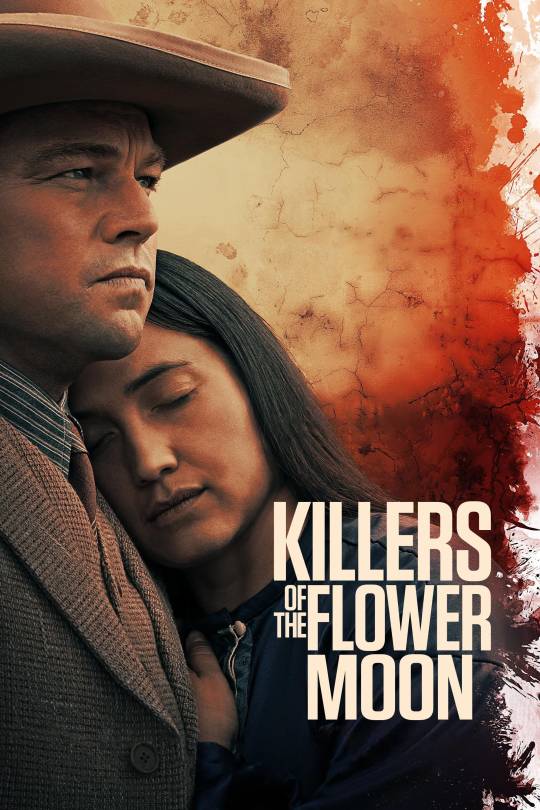
>> Watch The FULL Movie:
#movie#killersoftheflowermoon#MartinScorsese#LeonardoDiCaprio#RobertDeNiro#TrueCrimeFilm#HistoricalDrama#OsageNation#MysteryMovie#BookAdaptation#NativeAmericanHistory#Oklahoma#FilmPromotion#CrimeThriller#CinematicMasterpiece#OscarBuzz
0 notes
Text
Just Finished: Killers of the Flower Moon
Schools gloss over certain events in American history. This is one of them. Well-researched origin story of the FBI and an homage to the Osage Tribe.

0 notes
Text
Movie: Killers of the Flower Moon
youtube
Watch full move in online for free
#KillersOfTheFlowerMoon#LeonardoDiCaprio#MartinScorsese#TrueCrime#NativeAmericanHistory#Oklahoma#MysteryMovie#HistoricalDrama#FBIInvestigation#OsageNation#Youtube
0 notes
Text
Warm Up to Winter - with Virtual Programs @ Institute for American Indian Studies
Whatever the weather is like outdoors, learning something new indoors can be the perfect way to spend a cold winter afternoon. With that in mind, the Institute for American Indian Studies has developed a new Saturday series of virtual programs that are intriguing and ideal for those seeking indoor diversions this winter.
This presentation is the third in the Institute’s Annual Native…
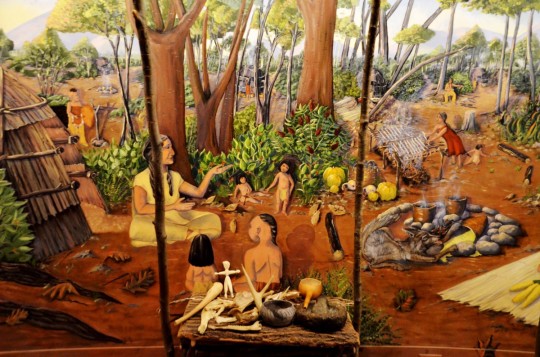
View On WordPress
#insituteforamericanindianstudies#NativeAmerican thingstodo#NativeAmericanculture#nativeamericanevent#Nativeamericanhistory#Virtualprograms#close to New York#Connecticut#connecticut events#Ct News#CT Travel#Litchfield Hills#New England#things to do in CT#Washington CT
1 note
·
View note
Link
Lacrosse is a sport that has been played by Indigenous people for centuries. It is a game that holds deep cultural significance and is an integral part of Indigenous identity. Today, Native lacrosse teams continue to honor their heritage by playing the game with pride and passion. The history of Native lacrosse is rich and complex. It is believed to have originated as a form of spiritual practice and was often played as a way to settle disputes between tribes. Over time, the game evolved and became a popular form of entertainment. Today, it is played at all levels, from youth leagues to professional teams. Despite the challenges faced by Indigenous communities, Native lacrosse teams continue to thrive. They are a testament to the resilience and strength of Indigenous people and serve as a reminder of the importance of preserving cultural traditions. Join us as we explore the world of Native lacrosse and celebrate this rich cultural heritage. 🥍🌺👏1. The Origins of Native Lacrosse: A Sport with Deep Cultural RootsNative lacrosse is a sport that has been played for centuries by Indigenous communities in North America. It is deeply rooted in cultural traditions and has spiritual significance. The game was originally played for various reasons, including settling disputes between tribes and preparing for battle. It was also seen as a way to honor the Creator and connect with the spirit world. 🥍 🌲 🌎 The rules of the game varied among different tribes, but the basic concept remained the same. The game was played on a field that could be up to several miles long, with teams consisting of anywhere from a few players to hundreds. Players used a stick with a netted basket to catch and carry the ball, which was made from wood, animal hide, or other materials. The game was fast-paced and physically demanding, requiring skill, agility, and endurance. 🏃♂️ 🏃♀️ 🔥 Native lacrosse has survived despite attempts to ban it by colonial authorities. Today, it is still played by Indigenous communities across North America, and efforts are being made to preserve and promote the sport's cultural significance. Through native lacrosse, Indigenous communities have been able to maintain their cultural traditions and connect with their heritage. The sport continues to be an important part of Native American culture and history. 👨👩👧👦 🌈 🎉 2. The Role of Lacrosse in Native American Society: More Than Just a GameLacrosse played a significant role in Native American society, serving as a spiritual and cultural activity. It was used to resolve conflicts and strengthen relationships between tribes. The game was seen as a way to honor the Creator and connect with the spiritual world. Players wore traditional regalia and performed rituals before and after games. Native American women also played lacrosse, with their own set of rules and traditions. They played on smaller fields and used smaller sticks. Their games were often played for entertainment and to celebrate important events. Women's lacrosse was also used to teach important life skills, such as teamwork and leadership. Today, Native American communities continue to play lacrosse, with many teams competing at the national level. They use the game as a way to preserve their cultural heritage and pass down traditions to future generations. Many players also use lacrosse as a way to combat social issues, such as substance abuse and suicide. Overall, lacrosse remains an important part of Native American society, serving as more than just a game. 🥍 3. The Evolution of Native Lacrosse: From Traditional to Modern PlayNative lacrosse has undergone significant changes over the years. The game has evolved from traditional to modern play, with new rules, equipment, and strategies. 🥍 Traditional lacrosse was played by Native American tribes for centuries. It was a spiritual and cultural activity that symbolized warfare, healing, and community. The game had few rules and was played on open fields with wooden sticks and deerskin balls. 🥍 Modern lacrosse emerged in the late 19th century when non-Native players adapted the game to their own rules and equipment. The first official lacrosse game was played in 1867 in Montreal, Canada. The game became popular in colleges and universities in the US and Canada. 🥍 Today, lacrosse is a global sport played by millions of people of all ages and genders. It has become more competitive, organized, and commercialized. The game is governed by international and national federations that regulate the rules, equipment, and competitions. 🥍 The evolution of Native lacrosse has sparked debates about cultural appropriation, identity, and representation. Some Native players and communities have advocated for the preservation of traditional lacrosse as a way to honor their ancestors and traditions. 🥍 However, many Native players and coaches have also embraced modern lacrosse as a way to showcase their skills, creativity, and diversity. They have adapted the game to their own styles and strategies, incorporating traditional elements such as stickwork, footwork, and storytelling. 🥍 The future of Native lacrosse is uncertain, but it is clear that the game will continue to evolve and adapt to new challenges and opportunities. Whether played in traditional or modern ways, lacrosse remains a powerful symbol of Native resilience, innovation, and pride.4. The Importance of Lacrosse in Preserving Native American HeritageLacrosse is more than just a sport for Native Americans. It's a cultural tradition that has been passed down for generations. Playing lacrosse is a way for Native Americans to connect with their heritage and honor their ancestors. Lacrosse was originally played as a spiritual ritual by Native American tribes. The game was seen as a way to communicate with the spirits and bring good luck to the tribe. Today, lacrosse is still an important part of Native American culture. It's a way to keep their traditions alive and preserve their heritage. Many Native American communities have lacrosse programs for youth to learn the game and connect with their culture. These programs also teach valuable life skills, such as teamwork, leadership, and discipline. Playing lacrosse can also improve physical health and mental well-being. By continuing to play lacrosse, Native Americans can honor their ancestors and keep their culture alive for future generations. It's important for non-Native Americans to understand the significance of lacrosse in Native American culture and respect its traditions. 🥍🌳🌎5. The Challenges Facing Native Lacrosse Teams TodayNative lacrosse teams face several challenges today, including: Lack of funding for equipment and travel Difficulty in recruiting and retaining players Competition from non-Native teams Limited access to facilities and fields Preserving the cultural significance of the sport These challenges can lead to a decline in participation and interest in Native lacrosse, which is a vital part of Indigenous culture. Efforts are being made to address these challenges, such as: Creating partnerships with non-Native teams and organizations Providing more resources for equipment and travel Offering training and development programs for players and coaches Building more facilities and fields Emphasizing the cultural significance of the sport in recruitment efforts Despite these challenges, Native lacrosse teams continue to thrive and compete at the highest levels, showcasing their skills and passion for the sport. Supporting these teams and the cultural significance of Native lacrosse is crucial for preserving Indigenous traditions and promoting diversity in sports. 🥍🏆👏6. The Future of Native Lacrosse: Promoting Cultural Awareness and Unity through SportThe future of Native Lacrosse is bright. The sport has been an integral part of Indigenous culture for centuries. It is a way to connect with their heritage and promote cultural awareness and unity. Native Lacrosse is more than just a game. It is a way of life. It teaches valuable life skills such as teamwork, discipline, and respect. It also helps to preserve Indigenous traditions and customs. Native Lacrosse has come a long way since its inception. It has evolved from a traditional game to a modern sport played at the highest levels. The sport has gained recognition worldwide, and many Indigenous athletes have excelled in it. Native Lacrosse has become a symbol of resilience and strength. It has helped to break down stereotypes and promote inclusion. It has also provided a platform for Indigenous people to showcase their talents and culture. The future of Native Lacrosse is about continuing to promote cultural awareness and unity through the sport. It is about creating opportunities for Indigenous youth to participate in the sport and learn about their heritage. It is about ensuring that the sport remains true to its roots and traditions. It is about celebrating the unique cultural identity of Indigenous people. It is about using the sport as a tool for healing and reconciliation. The future of Native Lacrosse is bright, and it is up to all of us to ensure that it continues to thrive. Let's work together to promote cultural awareness and unity through this beautiful sport. 🥍🌎 In conclusion, the Native Lacrosse Team represents a rich cultural heritage that has been passed down for generations. The game of lacrosse is not just a sport but a way of life for many Indigenous communities. It is a symbol of strength, resilience, and unity. By supporting and learning about the Native Lacrosse Team, we can gain a greater appreciation for the Indigenous culture and history. Let us celebrate the diversity and beauty of lacrosse and continue to honor its roots. 🥍🌳🌎 https://lacrossee.com/native-lacrosse-team-a-rich-cultural-heritage/?_unique_id=6495034dd49c3
#Uncategorised#culturalheritage#indigenousgames#NativeAmericanhistory#Nativelacrosse#traditionalsport#aiomatic_0
0 notes
Text

The Beauty of the Plains: Exploring the Wonders of the Wide Open Spaces
The Great Plains of North America are a vast and expansive region that spans from the Rocky Mountains to the Mississippi River. Despite being often overlooked by travelers, the plains offer a unique and breathtaking landscape that's unlike anywhere else on Earth. In this post, we'll explore the beauty of the plains and provide tips for exploring this awe-inspiring region.
Take a road trip: The Great Plains are best explored by car. Plan a road trip along the back roads and highways to discover the hidden gems and stunning vistas that dot the plains. Be sure to bring a camera and capture the natural beauty of the region.
Visit national and state parks: The Great Plains are home to many national and state parks that offer opportunities for hiking, camping, and wildlife viewing. Some of the most popular parks include Badlands National Park, Theodore Roosevelt National Park, and Custer State Park.
Learn about Native American culture: The Great Plains are rich in Native American history and culture. Visit museums and cultural centers to learn about the traditions, art, and history of the Plains Indians.
Go on a wildlife safari: The Great Plains are home to a wide variety of wildlife including bison, elk, pronghorn, and coyotes. Take a guided wildlife safari to see these magnificent creatures up close.
Attend a rodeo: The Great Plains are the heart of cowboy culture. Attend a rodeo to experience the thrill of bull riding, barrel racing, and other rodeo events.
Stargaze: The wide-open spaces of the plains provide some of the best stargazing opportunities in the world. Bring a blanket and gaze at the night sky to see constellations and shooting stars.
The Great Plains offer a unique and unforgettable experience for travelers who seek adventure, natural beauty, and cultural immersion. By following these tips, you can discover the wonders of this amazing region.
#greatplains#roadtrip#nationalparks#stateparks#hiking#camping#wildlifeviewing#NativeAmericanhistory#cowboyculture#rodeo#stargazing#adventure#explore#naturalbeauty#culturalimmersion
0 notes
Photo

#Repost @proudnativelifess • • • • • • FOLLOW @ProundNativeLifess for more updates... - - FOLLOW @NativeLifesss for more updates 😇 ~~ 👕 SHOP your T-Shirt/Hoodie NOW by clicking the link in MY BIO (PROFILE) 📦 👕 Click on the link in my bio (profile) to see the price,color,model and the sizes. ~~ 🎥📷 From to: ... 💕 ~~ 👊 Tag @... someone you would give this to... ________________🔥🔥🔥__________________ #nativeamericanflute #powwowworldwide #aho #wisdom #nativeamericanwoman #nativewatercraft #nativeamericanroots #nativeamericanlivesmatter #indigenousart #powwows #nativeamericanhistory #powwowdc #nativeamericanculture #nativewomen #nativeamerican #nativestyle #nativeamericanheaddress #indigenouswoman #nativeinstruments #indigenous #nativeamericanproud #nativeamericanapparel #nativeamericanmade #indigenouscanada #nativeamericanprincess #indigenouspride #nativeamericanartist #indigenoushistory #nativeamericanmodel . https://www.instagram.com/p/Cnhci8Mpvwt/?igshid=NGJjMDIxMWI=
#repost#nativeamericanflute#powwowworldwide#aho#wisdom#nativeamericanwoman#nativewatercraft#nativeamericanroots#nativeamericanlivesmatter#indigenousart#powwows#nativeamericanhistory#powwowdc#nativeamericanculture#nativewomen#nativeamerican#nativestyle#nativeamericanheaddress#indigenouswoman#nativeinstruments#indigenous#nativeamericanproud#nativeamericanapparel#nativeamericanmade#indigenouscanada#nativeamericanprincess#indigenouspride#nativeamericanartist#indigenoushistory#nativeamericanmodel
0 notes
